- Aga Khan Road, NSSF Building
- safari@tanzaniapurenatureandtravel.com
- 10+ Years Of Experience
4 Days Tanzania Camping Safari

5 Star Rated
Best Local Tour Operator

Best Local Tour Operator
4 Days - 3 Nights
Northern Circuit
Kilimanjaro Int. Airport
$ 1,730/ Person
Get a real taste of Tanzania on this safari which will take you right out to Serengeti, a great place to visit any time of year. You will also visit two of Tanzania’s most popular national parks; the Ngorongoro Crater, where you will have the best chance of seeing the Big Five, and either Tarangire National Park or Lake Manyara national Park depending on which will be selling better viewing of animals at that particular time.
This package welcomes you to Tarangire National Park, Lake Manyara National Park, Serengeti National Park and Ngorongoro Conservation Area. These wilderness areas are characterized by different inhabitant animal behaviors; however, you may see some exceptional attractions that will be sighted on the very specific park and never in another. As Manyara is well known for the tree climbing lions, the soda ash lake and its flamingos, Tarangire is widely famous for its high-density population of Elephants and Baobab Trees. Both Parks are a home to more than Hundreds of bird species and a haven for bird enthusiasts in East Africa.
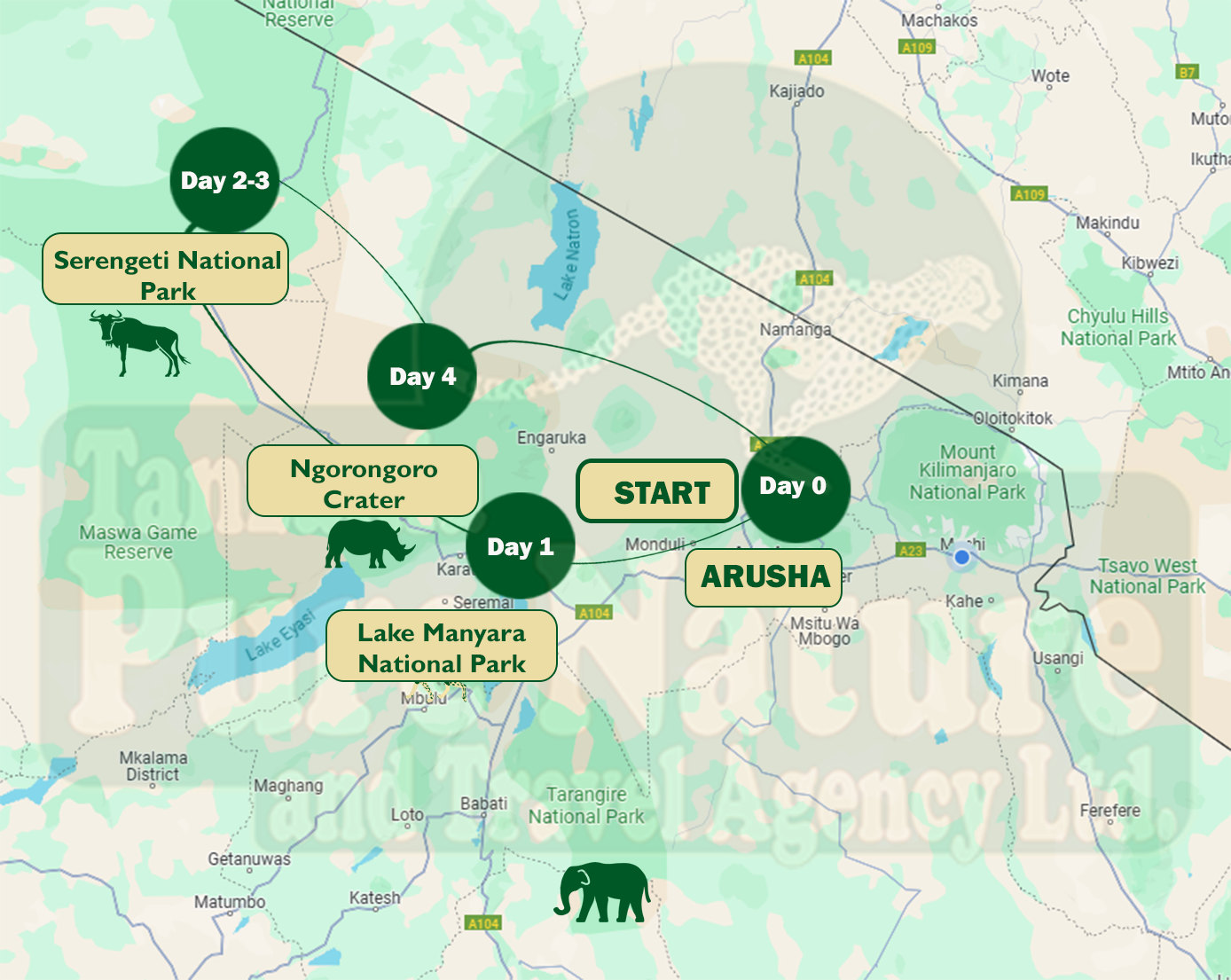
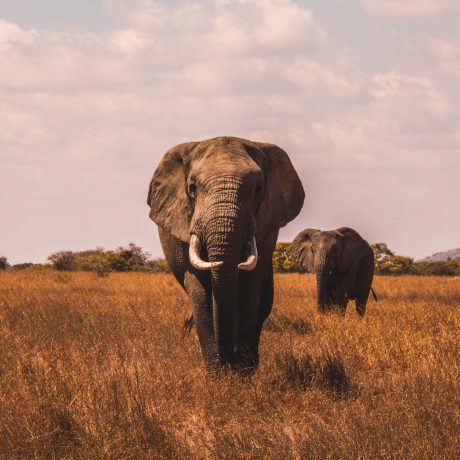
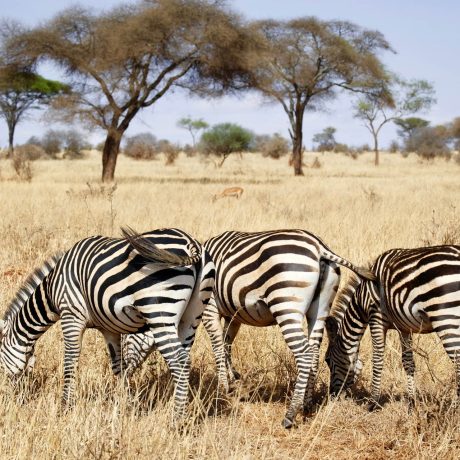
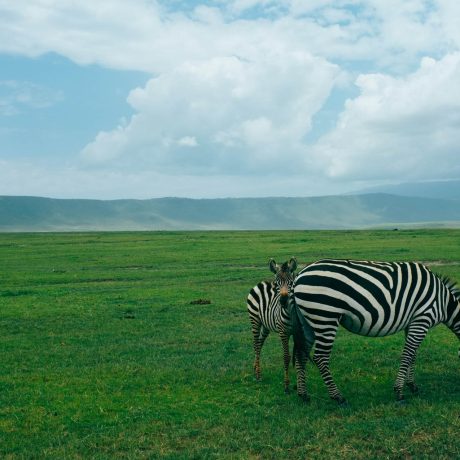
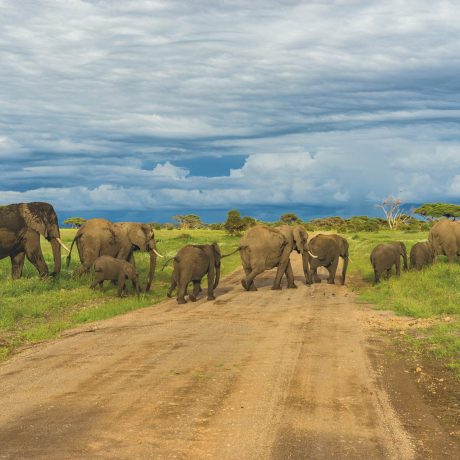
After a short briefing in the morning, you set off to the Lake Manyara National Park. The small park stretches along the 600 m high Rift Valley Escarpment and is dominated by the alkaline Lake Manyara. It is here where thousands of flamingos seem to colour the shallow waters pink. Many water birds gather at the lake and more than 400 bird species are found in the park.
The diverse vegetation provides a habitat for many animals such as monkeys in the forest, giraffes and antelopes on the grasslands and elephants around the acacia trees. If you are very lucky you might also see the Manyara lions, lounging in the trees. In the late afternoon you will leave the Lake Manyara National Park and head to the campsite, where you will spend the night.
After breakfast you will drive towards the fertile crater highlands where the Iraqw people grow wheat, corn and coffee. You will pass the Ngorongoro Crater before you reach the plains of the Serengeti National Park around midday. The Serengeti is the largest park in Tanzania and has a diversity of habitats and landscapes including short grass plains, savannah, thick bush, swamps, mountains and lakes. Bizarre rock formations called Kopjes dot the grassy landscape where predators are often seen. Depending on the season you will witness the migration of thousands of animals which this park is famous for.
During the short rainy season in November and December the herds move from the hills in the north to the plains in the south. During the longer rainy season from April to June they return up north. This circle of life is completely dependent on the yearly rainfalls and the locations of the herds may vary from year to year but your guide will know where to find the animals and where to see them best.
Dawn is a good time to watch wildlife and so you will be up early to join an early morning game drive. You will return to the camp for breakfast before heading out for another game drive in the park. Here in the Seronera region you will often see wildebeests and zebras in close proximity of lions and other predators such as leopards and cheetahs. After a picnic lunch you will continue your journey towards the Ngorongoro Crater. Once you have reached the crater rim you will enjoy fantastic views of this 600 m deep collapsed volcano.
After an early breakfast you will drive down the steep and narrow road that takes you into the crater. The slopes are forested but soon the landscape changes to savannah. Here the wildlife is just breath-taking and with a little luck you can observe the Big Five – lion, elephant, buffalo, rhino and leopard – in just a few hours. You should also see warthogs, wildebeests, zebras, hippos and some of the more than 500 bird species of the area. After a morning dedicated to game viewing and a picnic lunch, you will leave the crater in the early afternoon to drive back to Arusha, where you will arrive in the early evening.
Camping accommodation in Tanzania Safari offers a unique opportunity to experience the untamed beauty of East Africa up close. Set amidst stunning landscapes, these camps provide a comfortable yet rustic retreat, allowing travelers to immerse themselves in nature while enjoying modern conveniences. With wildlife encounters just steps away and evenings spent under the stars around campfires, it’s an adventure that promises unforgettable memories in the heart of Tanzania’s wilderness.
Tanzania Safari holidays are good all-year-round. Because of such close proximity to the equator, Tanzania undergoes two distinct dry and wet seasons. But the best-best time depends on the type of Tanzania safari activity you choose. However, the dry season of June to October is considered to be the best time to go on the Tanzania safari.
During the period of December to March, the Serengeti Migration congregates in large herds around Lake Ndutu in the Ngorongoro Conservation Area of Tanzania Safari. So, the wildebeest migration in the Serengeti is usually during June and July and January to February is the perfect time to see the wildebeest calving.
Ideally, there is no fixed price range for Tanzania safari. There are several factors such as time, numbers of days, and accommodations types that influence the Tanzania safari cost. However, the average cost of Tanzania Safari per day can come down to $400 (dollars) per head for a lodge safari and around $200 (dollars) per day for camping.
Yes, Tanzania is a fairly safe country. Every year millions of tourists visit this beautiful country in the hopes of a thrilling Tanzania travel experience. And, the statistics say that maximum tourists leave the country with their heart bubbling with joy and a secret promise to visit again.
Tanzania offers a great range of lodges and tented camps. However, your Tanzania accommodations depend on the type of packages you have purchased like budget safaris, standard or luxury Tanzania safari.
The duration of an ideal Tanzania safari can take between 5 to 10 days, to ensure you hit all the top spots on your safari. The length though can depend on how long you’d like to stay and enjoy a specific place, hotel, park on your itinerary.
Arrange your trip in advance – book this amazing tour now!
We have been receiving reviews from our served clients, and Tanzania Pure Nature And Travel is rated 5/5 by customers. This honor is given to us by customers because we always remain committed to all our customers to do whatever is needed by them to make their safari fully satisfied.
Our itinerary ideas can be as tailored as you’d like around your particular interests. These selected suggestions will give you some inspiration, but treat them just as a starting point because for your own trip will be created uniquely for you.
We targets the up market travelers, Budget and special interest groups such as students, the physically impaired (People with disabilities), corporate clients and the budget traveler (backpackers).




Copyright © 2025, All rights reserved to Tanzania Pure Nature and Travel | Crafted By Technoclick Tz